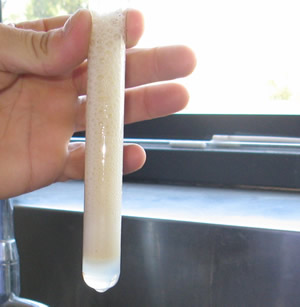Using chemical reactions for camouflage
Lead oxide is a white, insoluble, ionic compound that was commonly used in white paint.
During WWII the British navy devised a way to camouflage their submarines according to the task they were about to perform.
This involved very clever chemical reactions.
The submarine would be painted with lead oxide and would appear white. This is the perfect colour for a submarine that has surfaced during daylight. A white submarine is very difficult to spot during daylight as it blends in well with the horizon and the glare coming from the surface of the ocean.

However, during night operations, where the submarine may have to surface to deploy engineers or spies in enemy territory, the white colour is easily spotted. During night time operations a dark colour is needed.
So how was this achieved?
To change the white lead oxide to a black colour, sailors would prepare a solution of sea water and a sulfide, say sodium sulfide, which reacts with the lead oxide to form the black, insoluble compound known as lead sulfide.
Now once the night mission was complete a solution of sea water and hydrogen peroxide was prepared and the black lead sulfide painted to produce lead sulfate. Lead sulfate is white and so the submarine was white once more.
We can make lead sulfide in the lab by reacting solutions of lead nitrate with sodium sulfide.

Lead nitrate + sodium sulfide => lead sulfide + sodium nitrate
The chemical equation is written as
Pb(NO3)2(aq) + Na2S(aq) => PbS(s) + 2NaNO3(aq)

Reacting the black lead sulfide with hydrogen peroxide produces lead sulfate, a white insoluble solid according to the chemical equation below.
PbS(s) + 4H2O2(aq) => PbSO4(s) + 4H2O(l)
